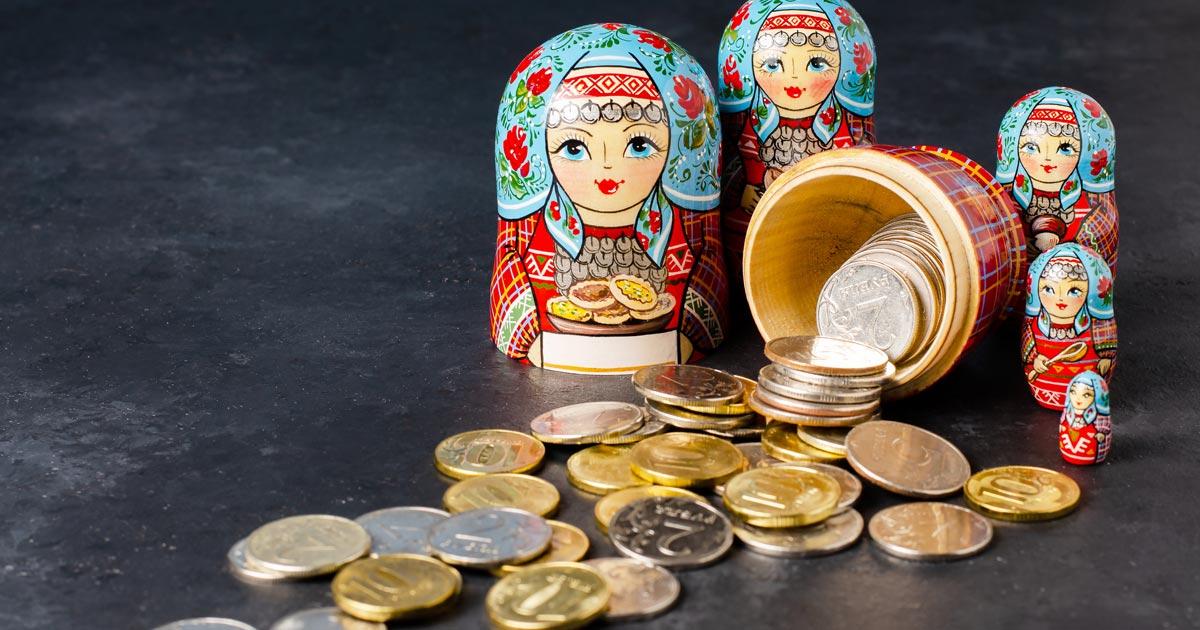
Inflation, monetary inflation specifically, is as desired and necessary by the state as food is necessary for human nourishment. Inflation, more so than taxation, is the main nourishment that enables the state to, slowly but surely, grow into a large and far-reaching bureaucratic apparatus that intervenes across almost all aspects of social and economic affairs.
Without inflation, the state finds itself shackled within the confines of what it can confiscate via taxes. A limited and noninterventionist government is, as sound economics shows and history proves, vital for freedom, prosperity and peace.
But because the state is the inherently violent and coercive, holding the power to legislate and enforce legislation, it is therefore inevitable that the government will, through political trickery and economic lies, undermine a sound money system in favor of the inflation facilitating fiat money system. This is why the state’s most preferred monetary system is one based on fiat currency protected from competition by legal tender laws as opposed to sound money by monetary freedom.
This is also why, from the state and statist economics (e.g., Keynesian economics) standpoint, the definition of inflation had to be deliberately distorted – to facilitate monetary inflation and currency debasement. Which feeds the state with the nutrients it needs to grow larger in size, scope and reach in detriment to truth, justice and liberty.
Definition of inflation
The popular and textbook definition of inflation is a generalized rise in the prices of goods and services. Commonly measured by the Consumer Price Index (CPI). This definition is not wrong per se but it is inaccurate and grossly misleading, and deliberately so.
The original and accurate definition of inflation is the artificial increase in the supply of money (and credit). By artificial it is meant that the expansion of the supply of money is not determined by the market but rather by an agency that oversees the centralized and monopolized monetary system – usually a central bank.
In today’s inflation-based statist economic system of fiat money, which has existed since 1971 when the last link between the dollar and gold was cut, it is thus convenient and necessary for the government to promote a distorted and misleading definition of inflation.
This distortion is not coincidental. This is intentional. Given the inherently inflationary and utterly immoral fiat money standard we (humanity) live under for 50 years now.
Deliberate distortion
Inflation has been deliberately distorted for two principal reasons. First, the government and its monetary agency – the central bank – shield themselves from any future blame for the continued rise in prices and the currency loss of purchasing power that inevitably happens as a result of monetary inflation. This enables the government and its collaborating media outlets to divert the blame to something else, with the usual suspects, or scapegoats, being “greedy businessmen” or “corporations.”
Second, and more tragically, the official and distorted definition of inflation—a generalized increase in prices of goods and services—conceals the truth, thus preventing the public from knowing that inflation and the currency’s loss of purchasing power is a deliberate policy of government/central bank all along. And if you don’t know the real cause of a problem, you will not be able to definitively solve it.
When inflation bites too hard and impoverishes the many (among many other harmful consequences to society), government/central bank officials won’t have to admit they create the inflation crisis. For example, this report claims that most Americans believe that “corporate greed, profiteering and price gouging” is the cause of the current inflation crisis in America where price inflation hit a 40 year record high.
What’s more unsettling is the same report found that the majority of those polled also believe that the government should step in and resolve the problem. In other words, the people want the cause of the problem to resolve the problem. How tragic.
Such is the depth of the sea of economic misinformation and miseducation in which the general public is drowned. Perhaps, if the public knew that since the establishment of the current US central bank in 1913, the dollar lost more than 95 percent of its purchasing power relative to gold, they wouldn’t blame the inflation crisis on “corporate greed.”
The government’s monetary agency and the current fiat money system are the cause for today’s increasingly inflationary and chaotic monetary situation. Not corporate greed, speculators, free-market capitalism, Vladimir Putin, or the weather.
When you have a fiat money system, which means central banks can easily, artificially and systematically increase the money supply, almost like a magic trick, inflation (mild or severe) becomes the norm. And this inflationary process gradually destroys the purchasing power of the currency resulting in higher prices.
Economist Hans F. Sennholz wrote:
It is not money, as is sometimes said, but the depreciation of money—the cruel and crafty destruction of money—that is the root of many evils. For it destroys individual thrift and self-reliance as it gradually erodes personal savings. It benefits debtors at the expense of creditors as it silently transfers wealth and income from the latter to the former. It generates the business cycles, the stop-and-go boom-and-bust movements of business that inflict incalculable harm on millions of people.
Professor Sennholz further noted:
Monetary destruction breeds not only poverty and chaos, but also government tyranny. Few policies are more calculated to destroy the existing basis of a free society than the debauching of its currency. And few tools, if any, are more important to the champion of freedom than a sound monetary system.
Conclusion
In closing, a generalized rise in the prices of goods and services, is a consequence of inflation, not inflation itself. That’s how it was classically (pre-Keynesian economics) defined.
It makes sense to use the terms monetary inflation to specify the artificial increase of the money supply, on one hand, and use price inflation to refer to a generalized rise in the prices of goods and services on the other hand.
Either way, inflation slowly, stealthily but surely distorts the economy, steals the people’s purchasing power and impoverishes society while benefiting the ruling elites. So, its definition was deliberately distorted to deceive the public and better serve secret government interests.
History (and common sense really) makes it clear that fiat money systems are unsustainable arrangements that always and inevitably fail. As such, I doubt today’s global fiat money system led by the US dollar will defy Natural economic laws to stand the test of time.
The good news is when the global fiat dollar standard crumbles (by (hyper)inflation or by interest rate hike? Perhaps a combination of both?), deep-seated economic fallacies and misconceptions that have emerged around it over the last decades, will crumble along with it.







